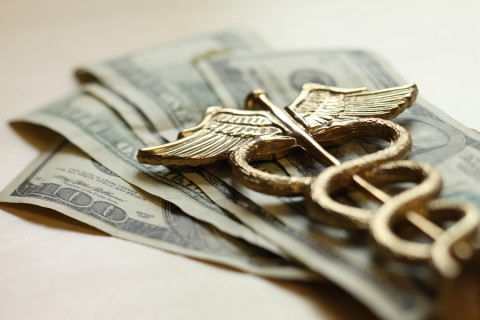 The health insurance marketplace has become an increasingly costly place to find the coverage Americans need, resulting in many Americans forfeiting or losing their health insurance. As it turns out, life without it is turning out to be even more costly than a fine paid once a year at tax time.
The health insurance marketplace has become an increasingly costly place to find the coverage Americans need, resulting in many Americans forfeiting or losing their health insurance. As it turns out, life without it is turning out to be even more costly than a fine paid once a year at tax time.
According to a study by Johns Hopkins Bloomberg School of Public Health released on June 8, 50 hospitals in the United States are charging uninsured patients more than 10 times the actual cost of their care. All but one of the hospitals are for-profit enterprises. The vast majority of these facilities are not located in pricey neighborhoods or big cities and of the hospitals mentioned, 20 are located in Florida.
Community Health Systems operates half of the listed facilities with Hospital Corporation of America coming in second with 14. Of the 5,000 hospitals in the United States, these facilities have led the way in price gauging uninsured Americans.
“They are price gauging because they can,” Gerard Anderson, co-author of the study and professor at Johns Hopkins told the Washington Post. “No one is telling them they can’t. These hospitals have the highest markups in the country. If it costs the hospital $100, they’re going to charge $1,000.”
The report states that the average American hospital charges 3.4 times the cost of care and unfortunately, often times there is no way of preventing it from happening. Trying to find out ahead of time from a hospital how much procedures or a stay in the facility will cost can be next to impossible, and once a bill arrives, it’s difficult for consumers to understand what they see on the bill.
Patients who have private insurance or Medicare have companies that negotiate lower prices on their behalf. But for the uninsured who are facing the hospital on their own, rising prices can lead to personal bankruptcy and damaged credit scores that often serve as a deterrent for receiving the care they need.
Only two states in the U.S., Maryland and West Virginia, regulate what healthcare providers can charge.
Officials at these hospitals are often quick to point out that their facilities provide significant discounts to uninsured patients and charity care for those who qualify. But consideration has to be given to the fact that the hospitals themselves set the policies regarding the criteria for which patients qualify for reduced or charity care with little oversight.
The authors of the study recommend requiring hospitals to post their markups online so patients are able to do price-comparisons before they go in for treatment. But that doesn’t work in emergency cases, for people who live far from all but one hospital, or for the majority of people, for whom hospital charging codes are incomprehensible.
The markup hospitals are using has increased in recent years as well. Up to 13% of Americans currently lack health coverage, despite the subsidized plans the Affordable Care Act can help people attain in many states. Uninsured patients are asked to pay the full charges while out-of-network patients and casualty and workers’ compensation insurers are often expected to pay substantial portions of the full charges.
For those with insurance, the last few years has seen the out-of-pocket healthcare expenses climb significantly. In 2015, insured people have seen the charges they owe increase by 8% this year over last.
“Clearly, hospitals need to receive sufficient revenue to remain in business, and having revenues that are above costs is necessary,” the authors of the study noted. “This argument, however, cannot completely explain the wide variation in the charge-to-cost ratio or why some hospitals are charging 10 times their costs.









